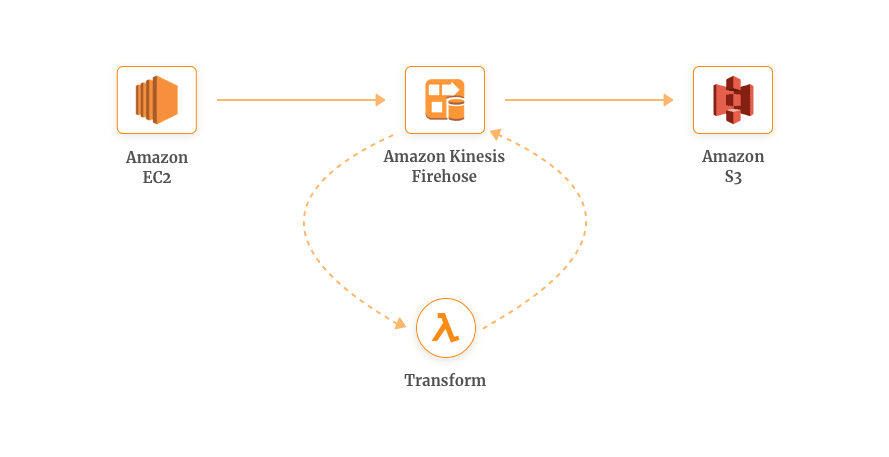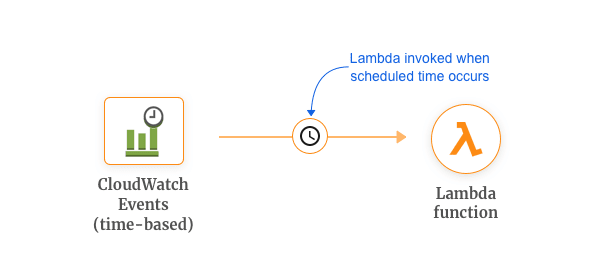Gartner reports that by 2020 more than 20% of enterprises will have switched to serverless computing. Because it genuinely enables a platform as a service semblance serverless computing and is becoming an increasingly popular trend with enterprises. Thanks to AWS services like AWS Lambda, this future-forward trend in application development and cloud-based hosting is witnessing significant advancements.
Let’s start with a simple explanation for those unaware of serverless computing with AWS Lambda. A responsive cloud service, AWS Lambda is Amazon’s serverless compute service that allows you to run code without managing servers on containers. Not saying that servers are troublesome; however, serverless architecture is way more convenient and manageable.
Going serverless means your developers must focus on building world-class web applications and worry less about infrastructure management. As a result, the entire process becomes more flexible and automatic.
AWS Lambda, your compute service provider, inspects actions by deploying user-defined codes. All you need to do is upload your code. After that, Lambda automatically takes care of everything it takes to compute services across multiple availability zones. The best thing, AWS Lambda automatically scales depending on how much you use it. As such, you pay only for the work done on it.
Lambda’s serverless compute services can also be used in data pipelines to simplify integrating data across various AWS services. All in all, Lambda is a brilliant way to execute code in the AWS cloud. Renowned names like Netflix, Zapier, Intuit, NY Times, and Asana have added AWS Lambda to their tech stack for its benefits. Let’s read through how these enterprises have used this technology to support their scale of operations.
How enterprise businesses are using AWS Lambda (Use Cases)?
Even though there are various ways in which enterprises can leverage AWS Lambda, the following three make the most widely adopted uses cases.
1. Data lakes
Serverless data lakes on AWS offer the agility and flexibility that traditional data management systems lack. These serverless data lakes fuel any analytics, be it fraud detection, recommendation engines, event-driven ETL, internet-of-things processing regardless of volume, etc. Companies like Woot have switched to serverless data lakes on AWS for their various benefits, including improved data ingestion, data storage, data visualization, and management. Another essential benefit of these data lakes is their virtually unlimited scalability.
2. AWS Microservices
For short-running services, enterprises can utilize Lambda through an API Gateway. AWS Lambda helps you break down your system into microservices that can be invoked using an API call. Using AWS microservices not only makes the process a whole lot more manageable but also very cost-efficient. With AWS microservices, each function can be invoked separately as and when need be.
3. Disaster Recovery
AWS Lamba’s automated monitoring has dramatically improved disaster recovery for enterprises. Consider CloudWatch alarms as an AWS Lambda-assisted disaster recovery use case. These alarms scan all EC2 instances and filter them with a particular tag. Even if you have hundreds of servers, a single Lambda function can utilize a thousand automated monitors and scan all EC2 instances. Lambda will also automatically remove all those monitors when no longer needed, saving you unnecessary costs.
Why use AWS Lambda?
Want to get started with your serverless architecture journey? You could still be confused without knowing where you can utilize AWS Lambda. That’s where the following use cases will serve as a handy reference.
Serverless Website Example with AWS Lambda- You can build a powerful website without managing it on a single server or an operating system. Using AWS Lambda, you can build a fantastic website with some super awesome functionalities. For example, creating a serverless eCommerce website using AWS Lambda will cover everything from your payment management to cart management to your recommendation engine. You only need an AWS API Gateway, DynamoDB, Amazon S3, and Amazon Cognito User Pool to create your serverless website. With AWS Lambda, you can also create serverless dynamic web pages.

Image Courtesy- SIMFORM
Serverless Authentication Using AWS Cognito- AWS Lambda can trigger authentication based on actions such as user sign-up, user confirmation, sign-in, etc., using a simple Lambda function. You can experiment with ideas like sending out personalized verification messages to make your authentication procedure more foolproof and secure. When used alongside AWS Lambda, Amazon Cognito will trigger the Lambda function before sending the authentication email or phone verification text, allowing you to customize your message as required.

Image Courtesy- SIMFORM
Multi-Location Media Transformation- Converting media files into different formats with constraints like processing time, latency, and storage is a considerable challenge. Several situations you encountered multiple times include image resizing based on query parameters or defining the allowlist of image dimensions. Such problems can be quickly dealt with when running on a serverless architecture. For example, when executed, the Lambda 1 function serves the media file in the requested format. However, if the requested format is unavailable, executing Lambda function 2 will fetch the media file with the required configurations from the Amazon S3 bucket. It will then cache it to CloudFront.

Image Courtesy- SIMFORM
Mass Emailing using AWS Lambda & SES- Traditional mass emailing spells a lot of hardware expenditure and licensing costs. On the other hand, with AWS Lambda, you can easily create a cost-effective serverless email platform. For example, the New York Times sends over 4 billion emails annually, including breaking news, transactional emails, and newsletters. When running your emails on a serverless architecture, your email list will be stored on S3, allowing you to quickly send HTML or text-based emails to a vast client list. You can even set up automated scheduling of your emails using CloudWatch events.

AWS Lambda Use Case for Real-time Data Transformation- Restructuring raw data required normalization, performing ETL functionalities, cleansing data, and combining data from different sources. With AWS Lambda, all this is just as quickly done as said. The Lambda function transforms the data (buffered from different sources) as per the custom logic. This data is then sent to Amazon Kinesis Firehouse, which was initially collected from different sources and written to the specified destination.

Image Courtesy- SIMFORM
Serverless CRON Jobs- You can run time-based tasks on a serverless architecture by specifying cron expression and putting the task on a schedule on AWS Lambda. Use CloudWatch Events as an event source. Next, specify the preferred time interval. Using this functionality, you can send out newsletters at fixed intervals, such as on a per-week basis, schedule billing emails for the end of the month, set cart recovery email reminders for every two days, etc. Check out an example to get started with CRON jobs in CloudWatch and AWS Lambda.

Image Courtesy- SIMFORM
AWS Lambda Use Case for Efficient Monitoring- There can be two cases for efficient monitoring through AWS Lambda. Get notifications on alarm threshold breached if your CPU runs low or beyond its limits. With CloudWatch in action, it will trigger a Lambda function that will notify the team through an email or end the underperforming resources. Or, if you want to monitor the incoming CloudWatch logs in real-time, integrate it with a function that will keep track of any anomaly and notify the team when required. Or you can even program it to write these logs to your database for a backup.

Image Courtesy- SIMFORM
Real-time Notifications with AWS Lambda and SNS- Information is useless if received correctly. Thankfully, these are not the times when a message from one part of the world would take weeks to reach another. Real-time notifications have added a lightning-fast pace to information sharing. An interesting use case in this context is receiving infrastructural alerts such as Slack notifications. Upon receiving the message from CloudWatch, the SNS topic invokes a Lambda function. After that, the Lambda function calls the Slack API to post a message to the Slack channel.

Image Courtesy- SIMFORM
Building a Serverless Chatbot- If you don’t want to worry about provisioning and scaling infrastructural resources to run your chatbot, go serverless. Working on a scalable chatbot architecture removes the focus from managing it. You can work out ideas for innovating the functionality of your bot. Moreover, Lambda runs only when commanded, so you don’t keep running out of resources frequently. Moreover, you only for that much time for which it runs your code.

Image Courtesy- SIMFORM
Serverless IoT Backend- AWS IoT has many use cases, including asset condition monitoring, ensuring secure communication between IoT devices, anomaly detection, etc. If you wish to get creative with AWS Lambda, use AWS IoT 1-Click to create business logic per your requirements. Similarly, AWS Lambda also allows you to create your own IoT backend solutions easily.

Image Courtesy- SIMFORM
DevOps and AWS Lambda Case Study
Implementing a DevOps strategy along with AWS Lambda is best done with the help of an experienced service provider. Read this case study to learn how we helped an Australian ticket booking application for live events implement DevOps solutions in just 45 days! Result – The Booking platform achieved 30% efficiency in the Software release Cycle. Click here to read the Case Study.
To get the latest insights, research and expert articles on AWS Services, Cloud Migration, DevOps and other technologies, subscribe to our Blog Newsletter here. For AWS Case studies and success stories, visit Case Study Section




